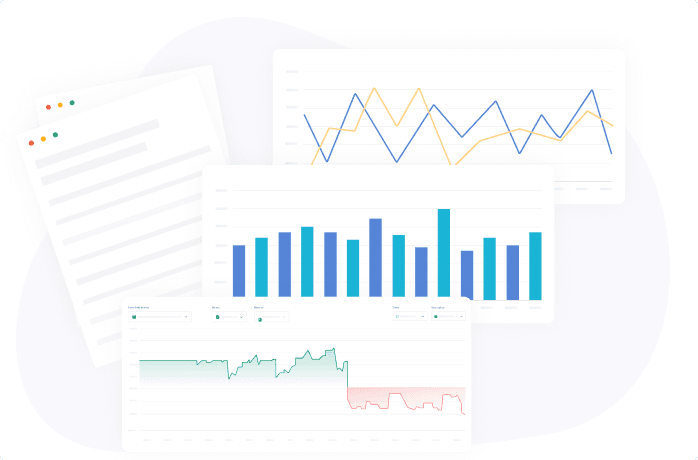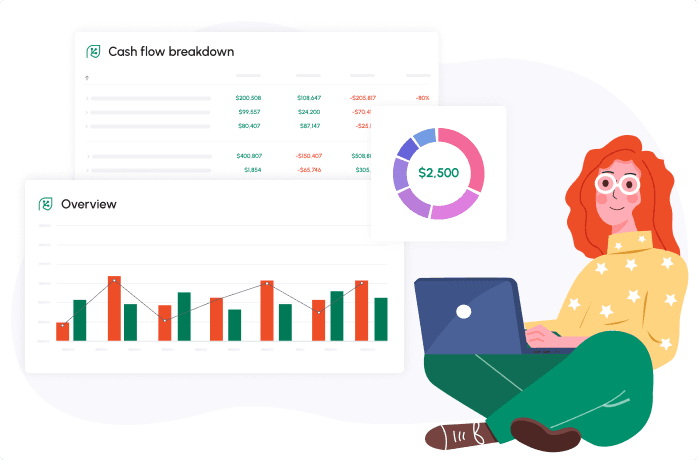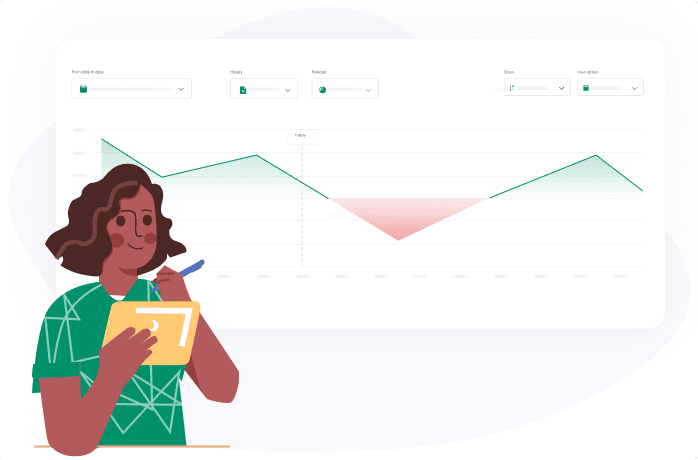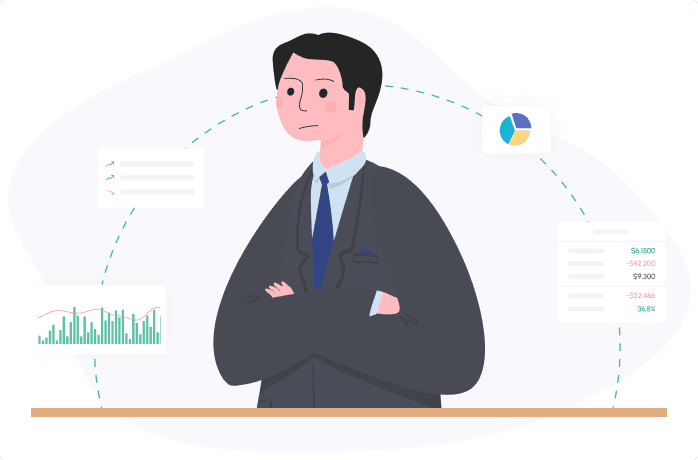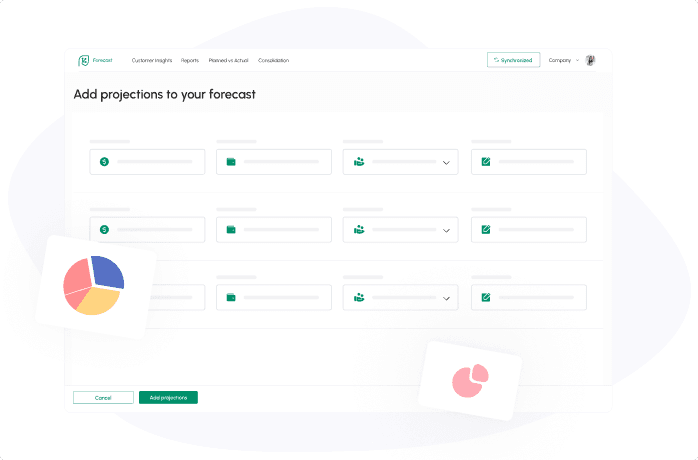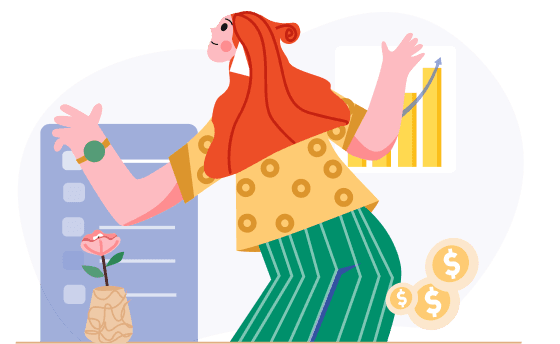

The dangerous gap between cash flow vs profit keeps financial advisors busy and leaves entrepreneurs tossing and turning at night.
Here's the uncomfortable truth: A business can boast impressive profit margins while quietly running out of operating capital. Many companies experience their most financially unpredictable moments during their most profitable years. This seeming contradiction catches even experienced entrepreneurs off guard.
This article explains why the difference matters, how to monitor both metrics, and what practical steps you can take to improve your financial health before problems snowball.
Cash Flow vs. Profit – Why It's Important to Know the Difference
Is cash flow the same as profit? Not by a long shot. The difference between cash flow and profit isn't some tough accounting details; it is simply a matter of survival.
Many business owners focus more on their profit margins while entirely paying no attention to when money actually arrives. Then suddenly they're in a full-blown cash crisis, wondering how they got there when the numbers looked so good on paper.
Profit in the business measures its performance, whereas cash flow indicates your real liquidity. In other words, profit indicates the amount of money you generated, whereas cash flow reveals if you can cover your expenses.
Although you might have big and impressive figures for the profit column in your financial statements, if the business does not have enough cash, its operations will struggle to run effectively.
The Role of Cash Flow and Profit in Business Finance
Many business owners struggle to understand; ‘Does cash flow mean profit?’ Here's a simple explanation of each role in your business context.
- Profit shows how much financial gain your business actually creates after accounting for all costs against your earnings. It's the ultimate scorecard of your business model's viability. It shows long-term wealth generation but misses when cash actually moves—creating financial blind spots..
- Cash flow is your essential lifeline for liquidity. It monitors exactly when money physically enters and exits your company's accounts during day-to-day operations. Robust cash flow guarantees that you can fulfil your obligations today.
Here’s an easy illustration. If you make $100,000 in sales but only receive $50,000 while bills are due, you're short on cash.. That constitutes a cash flow problem even though it reports a profit.
How Business Owners Often Confuse the Two
Many entrepreneurs mix up their financial measurements, but the fundamental question remains: Is cash flow the same as profit when examining your company's true financial health? Getting it wrong can derail your plans.
For example, you could land a big contract, but if payment doesn’t arrive for 90 days, you’re still out of pocket.
Here, the difference between cash flow and profit becomes clear. Profit might paint a rosy picture, but without available cash, it won’t help you pay suppliers or cover payroll.
Cash flow keeps your business alive day-to-day. Profit indicates that your company is on the correct track over the long haul. You can find yourself in a financial bind if you confuse them.
What Is Cash Flow?
Definition of Cash Flow & How It Works
Does cash flow mean profit? The short answer is no. While the two are connected, they measure different aspects of your financial health.
The real-time movement of funds into and out of your business's accounts is known as cash flow. The incoming funds may originate from clients, borrowing, or investments. Costs like rent, salaries, utilities, and stock are included in the money that is leaving your company.
Cash flow is crucial. High sales mean little if real cash isn’t available for urgent needs.
Say you make $70,000 in sales this month but only collect $35,000, and your expenses are $40,000. That’s a $5,000 gap, even though the books say you’re doing well.
Types of Cash Flow (Operating, Investing, Financing)
Cash flow comes in three forms:
- Operating Cash Flow: This tracks cash from your core business activities. It’s the most important type because it shows whether your main operations are bringing in more money than they spend.
- Investing Cash Flow: When you purchase assets like machinery or buildings, or when you sell these capital investments, the money involved falls into this category of your cash flow. These aren’t daily expenses but still impact long-term liquidity.
- Financing Cash Flow: Money that enters or leaves your business through borrowing, investor capital contributions, or debt repayments represents this critical component of your overall cash movement. It gives insight into how you fund your business.
Each plays a key role in keeping your company functioning and growing.
What Is Profit?
Definition of Profit & Why It Matters
Profit is the amount of money left over after subtracting all of your company's expenses from its revenue. It shows whether your business creates wealth or just circulates money.
While profit remains essential for enduring success and investor attraction, it doesn't necessarily reflect your immediate operational capacity. Your enterprise might boast impressive profit margins on paper, yet face significant cash flow challenges that threaten day-to-day operations. This reality underscores why monitoring both cash flow vs profit is absolutely critical.
Types of Profit (Gross, Operating, Net)
There are three main types of profit:
- Gross Profit: It is the income less the expense of items sold. It informs you whether your product production or sourcing is efficient.
- Operating Profit: It is gross profit less operating expenses. This indicates how effectively you’re running the business on a daily basis.
- Net Profit: The amount remaining after deducting taxes, interest, and other non-operational expenses. These are your real profits; the funds you can reinvest or allocate.

Key Differences Between Cash Flow and Profit
Timing of Revenue Recognition
Is cash flow same as profit? Not quite. The biggest difference lies in timing.
Profit appears on your financial statements when it's officially earned, regardless of when the money actually arrives in your account.
On the contrary, cash flow only counts when the money is actually in or out of your account.
For example, if you invoice $5,000 in January but get paid in March, profit shows January earnings, but cash arrives later.
Non-Cash Items & Financial Adjustments
Your financial statements include expenses like depreciation that decrease your reported profit without actually removing money from your accounts. This means you could show negative earnings on paper while maintaining a healthy bank balance.
As a result, having money available doesn't necessarily indicate profitability, and being profitable doesn't guarantee available cash.
Cash Flow Can Be Negative While Profit Is Positive
Your books of accounts may show that you’ve made a substantial profit, but if most of the customers have not paid for the goods sold, you might be functioning with a cash flow deficit.
Profitability Does Not Always Translate to Strong Cash Flow
A business might post big profits during peak seasons, like the holidays, but struggle with cash flow in off months. This is why maintaining consistent oversight of your money movement throughout the year remains essential for business success.
Why Cash Flow Problems Can Hurt Profitable Businesses
Profits are good, but a lack of cash can disrupt operations.
Although some companies fail to pay their employees on time and struggle with unpaid vendors, it doesn't necessarily indicate a lack of profitability. It indicates ineffective cash management. This makes managing cash flow just as crucial as hitting profit targets.
When Should You Prioritize Cash Flow Over Profit?
There are times when cash flow should take center stage. For example, when:
Launching a New Product
When introducing a new product to the market, you need to put a lot of money into the front. You'll spend on developing the product and getting the word out.
This happens long before you make your first sale, and sometimes months or even years in advance.
Having enough cash on hand helps you bridge that tough period when you're spending a ton but not earning anything yet.
Without those reserves, you might cut corners or position your product poorly just to save money.
Entering New Markets
Market expansion demands immediate capital for everything from regulatory compliance to local staffing and distribution channels. These costs hit your books months before new customers start generating meaningful revenue streams, making cash flow management crucial during expansion phases.
Supply Chain Delays
When shipments get stuck or you can't get the materials you need, you still have to pay your team and keep everything running despite not making any money during that time. Having a healthy stash of cash acts as a safety net against unexpected problems that can arise in business.
Without this financial cushion, what should be a minor setback could quickly turn into a serious threat to your company's survival.
Economic Downturns
Recessions squeeze your sales pipeline while fixed costs like rent and core staffing remain constant. When business slows down, having money in the bank gives you space to rethink how you operate instead of panicking and slashing costs that might hurt you down the road.
You can take the time to adjust your approach thoughtfully rather than making hasty decisions just to survive the moment. This financial cushion lets you focus on smart changes instead of desperate ones.
Pitching to Investors
Sophisticated investors understand that profit can be engineered through accounting practices, but cash flow reveals the true operational health of your business. Demonstrating strong cash management signals that you have the discipline to turn your investment into sustainable growth rather than just paper profits.
How to Improve Both Cash Flow and Profit
Understanding cash flow vs profit helps you implement targeted strategies that improve both metrics simultaneously, rather than focusing on one at the expense of the other. Here are a few smart ways to strengthen both:
- Offer discounts for early payments.
- Cut unnecessary expenses by reviewing your budget regularly.
- Negotiate vendor terms to delay payments and improve cash flow.
- Revisit pricing to boost profit margins.
- Streamline invoicing and minimize errors by automating finances.
- Utilize freelancers for temporary tasks instead of permanent employees.
Cash Flow vs. Profit – Which One Matters More for Your Business?
Cash flow versus profit isn’t about choosing one over the other. Both matter, but cash flow often requires more urgent attention, especially in the early or uncertain stages of a business.
To sum it all up, profits may fuel long-term goals, but cash flow keeps your business breathing today. If you want to avoid costly missteps, explain the difference between cash flow and profit clearly to your team and stakeholders.
FAQ
Related posts:
You may be interested:
New:



